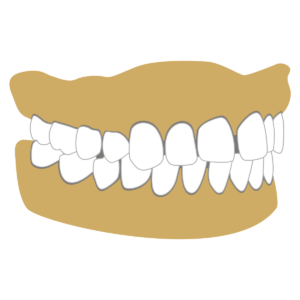What is spacing?
Spacing is an orthodontic concern characterised by gaps between one or more of the teeth. A space between two teeth may be referred to as a “diastema”, and you will most often hear this in reference to a gap between the upper two front teeth (or upper “central incisors”).
 What causes it?
What causes it?
- Spacing is often hereditary, but may also be the result of:
- A tooth size discrepancy, where one or more teeth is significantly smaller than others,
- A large upper or lower jaw
- Missing teeth
The commonly seen diastema between the upper front teeth may be due to the muscle connecting your lip to your gums, known as the “frenum”, holding the two teeth apart. In some cases, spacing may also come about from gum disease, where teeth shift as they loosen in the diseased gums or bone – treatment of which would start with your general dentist or periodontist (gum specialist).
What impact does this have?
Spacing may have a cosmetic impact on the sufferer, as well as affecting the ability to maintain good oral hygiene. It may also put undue pressure on one or more of your jaw joints and cause premature tooth wear.
How can it be treated?
Spacing can be treated in several ways, including with braces or clear aligners like Invisalign. If your spacing is due to missing teeth, it might be recommended that a prosthetic (false) tooth be placed in its spot. If your spacing involves a diastema between the upper central incisors, it may be recommended that a “frenectomy” (a simple procedure where the piece of tissue holding the space open is removed) be performed in combination with your orthodontic treatment.
To find out more about spacing, and your treatment options, contact us today to organise a consultation with Specialist Orthodontist, Dr David Austin.

